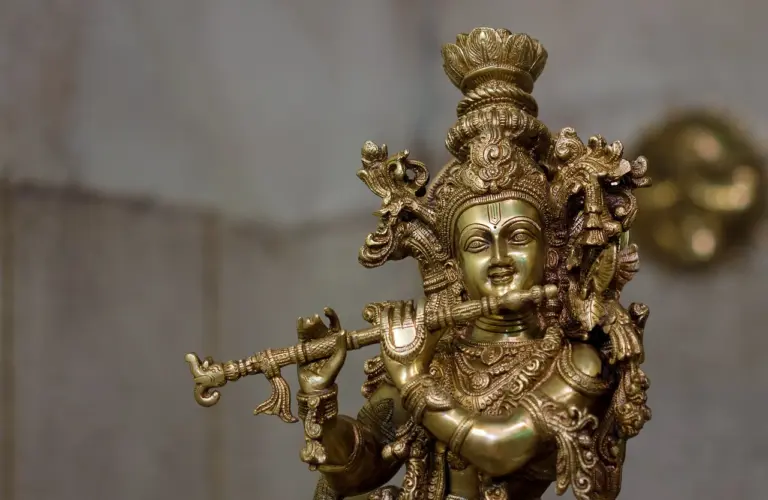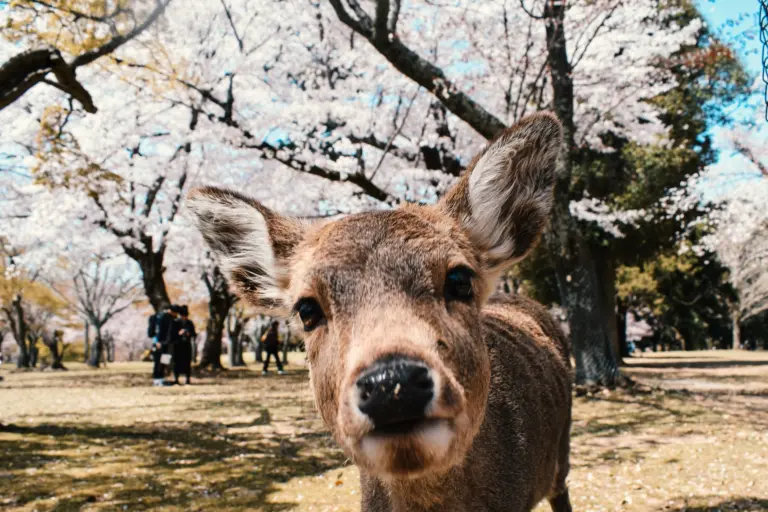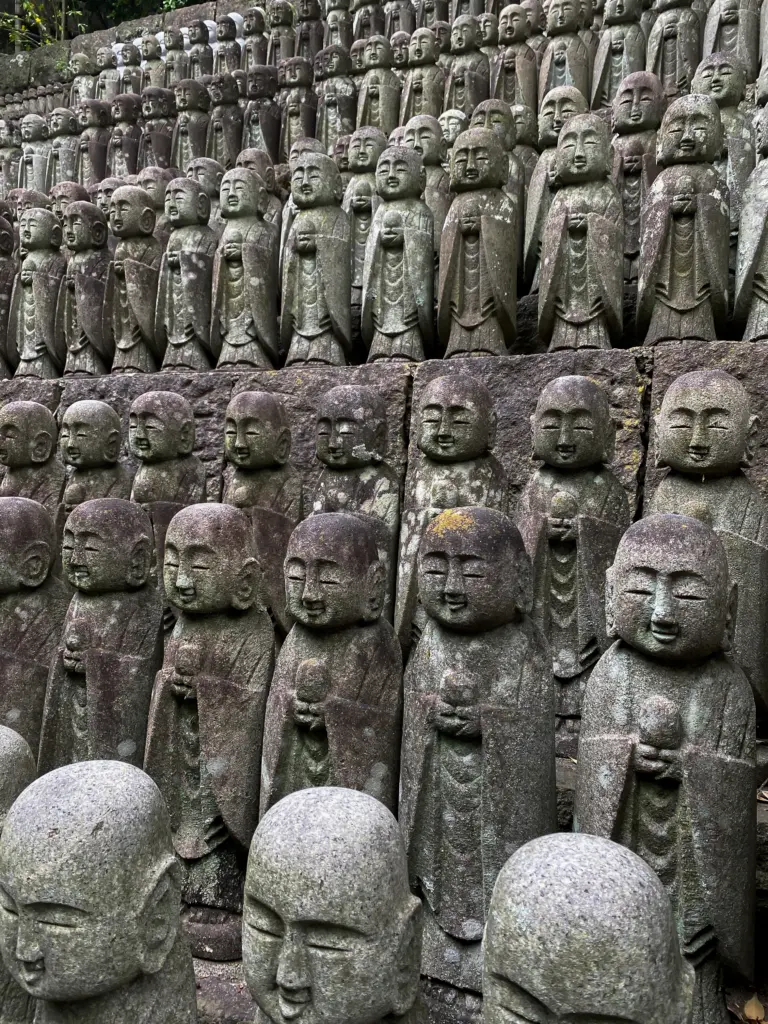From the dawn of civilization, humanity has looked to the heavens for guidance, attempting to find meaning in the celestial journey of stars and planets.
Astrology, the ancient practice of interpreting these cosmic patterns, has been an integral part of human history, influencing decisions, cultures, and even shaping the destiny of empires.
Enter the Zodiac—a circular path consisting of twelve signs, each with its unique set of characteristics, behaviors, and symbolic representations. But beyond the surface level attributes of each zodiac sign, there exists a deeper layer of understanding: the Archetypes.
While Esoteric Astrology maps out the soul’s journey, within the realm of traditional astrology, the signs of the zodiac serve as twelve distinct archetypes, offering insights not just into individual personalities, but also into the shared human experience.
Table of Contents
ToggleWhat are Archetypes?
The concept of archetypes, while currently intertwined with modern psychology and cultural studies, has roots that dig deep into the annals of human history. But what exactly are these symbolic motifs that seem to transcend time and space?
“Archetype” originates from the Greek words “archein,” meaning “original” and “typos,” which translates to “pattern” So basically, an archetype is an original pattern from which copies are made. However, in the realms of philosophy, psychology, and the arts, archetypes are so much more.
They represent universally recognized and understood symbols, themes, or characters that recur throughout literature, art, myths, and even our dreams.

Carl Jung and the Archetypes
It was Carl Gustav Jung, the Swiss psychiatrist and psychoanalyst, who brought the term into the limelight in the 20th century. He posited that these recurrent symbols were not coincidences but stemmed from a deeper part of the human psyche: the collective unconscious.
This realm of the unconscious is not personal but universal, shared by all humans.
Jung believed that archetypes were innate psychic dispositions to experience and represent fundamental human situations in specific ways. They give form to certain universal contents of human experience.
Long before Jung, however, archetypes manifested in human culture through myths, legends, and folklore. From the Greek tales of Prometheus to the Hindu myths of Lord Krishna, archetypical figures emerged as a way to communicate shared experiences, values, fears, and aspirations.
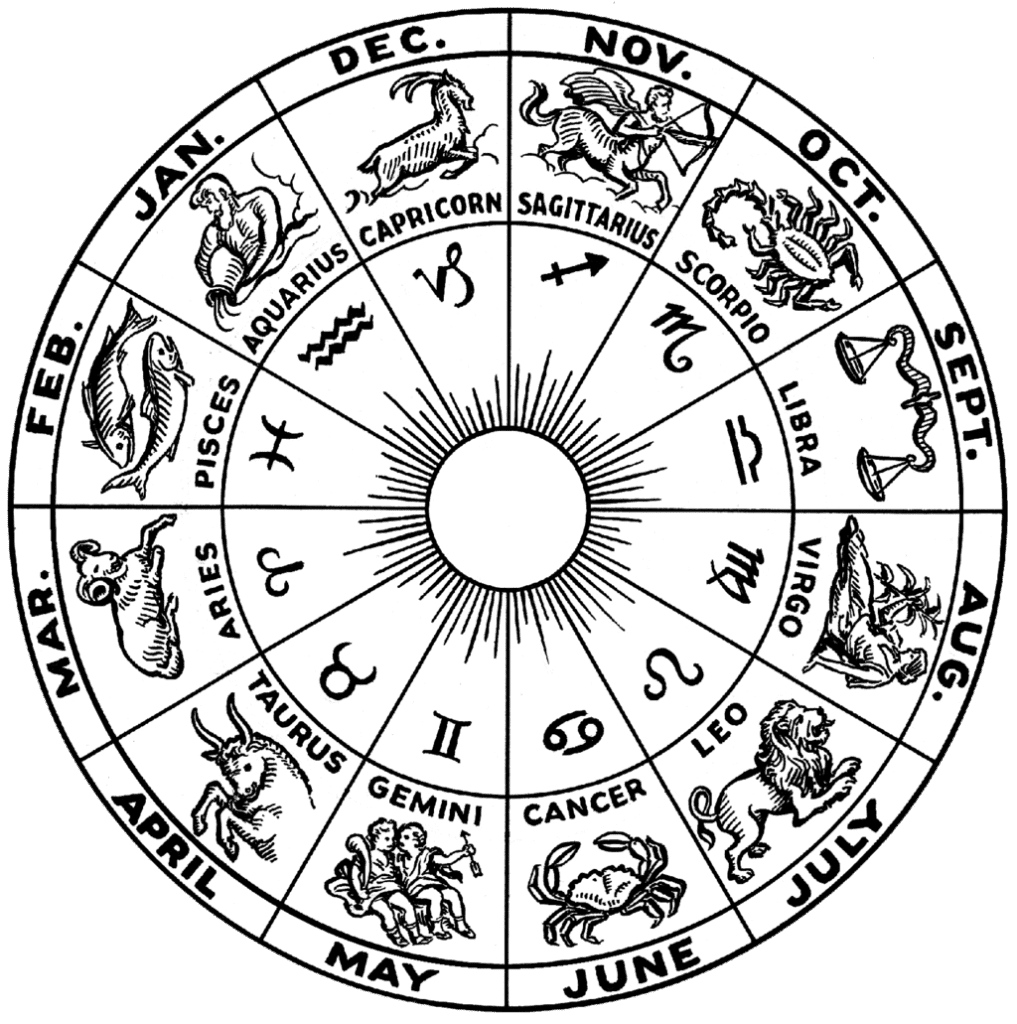
The Foundation of the Zodiac
The word “zodiac” is derived from the Greek word “zodiakos”, which translates to “circle of animals”. This aptly describes the circle of twelve 30° divisions of celestial longitude that the sun traverses over the course of a year.
Each of these divisions is named after the constellation that originally appeared in its sector: Aries, Taurus, Gemini, Cancer, Leo, Virgo, Libra, Scorpio, Sagittarius, Capricorn, Aquarius, and Pisces.
Though these constellations provided the names, it’s worth noting that in Western tropical astrology, the zodiac signs don’t align with the constellations anymore due to the precession of equinoxes. Instead, they mark the sun’s path as divided by the spring equinox. As opposed to the Chinese zodiac which is lunar based.
The zodiac’s very foundation is intertwined with the sun’s path, known as the ecliptic. As the Earth orbits around the sun, it appears, from our terrestrial vantage point, that the sun is moving through the zodiac belt, spending roughly a month in each sign. This apparent path sets the backdrop against which we define the astrological signs.
The moon and planets also move along the ecliptic, and their positions, relative to the zodiac signs, form the basis for much of astrological interpretation.
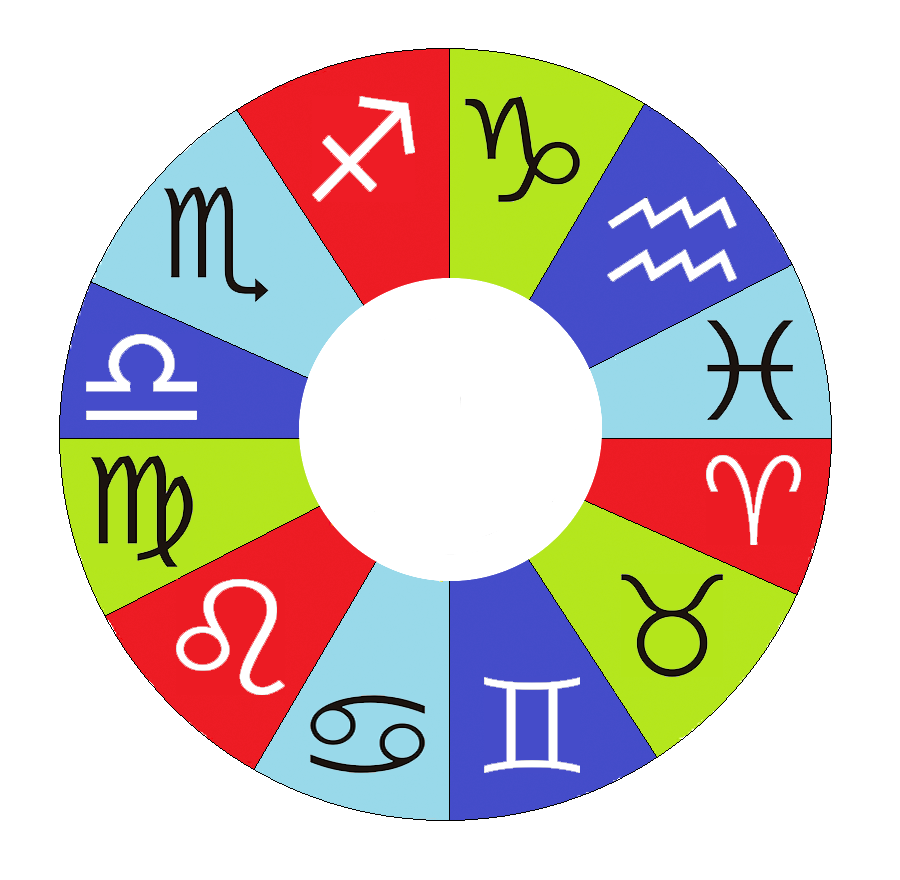
The Elemental Groups
Diving deeper into the characteristics of each zodiac sign, we find that they are grouped based on elemental qualities, each element representing specific traits and temperaments:
Fire Signs (Aries, Leo, Sagittarius): These signs are characterized by dynamism, enthusiasm, and a strong sense of individuality. Like fire itself, they can be passionate, fierce, and spontaneous.
Earth Signs (Taurus, Virgo, Capricorn): Grounded and practical, earth signs value stability and tangible results. They are often seen as the builders and nurturers of the zodiac.
Air Signs (Gemini, Libra, Aquarius): Air signs are the thinkers and communicators. They are social, curious, and always seek balance.
Water Signs (Cancer, Scorpio, Pisces): Deeply intuitive and emotional, water signs navigate the world through their feelings. They are empathetic, sensitive, and possess a strong sense of intuition.
The Zodiac Archetypes

1. Aries - The Ram
March 21 – April 19
Element: Fire
Aries, the pioneering sign of the zodiac, is infused with the Fire element. Representing the spark that begins the astrological cycle, its fiery nature embodies the qualities of initiative, passion, and dynamism.
Archetype: The Warrior
The Warrior archetype reflects Aries’s spirit of courage, assertiveness, and leadership. Warriors are known for their determination to confront challenges head-on and to defend their territories or principles. Aries, in alignment with this archetype, shows a natural inclination to lead, initiate, and fearlessly venture into new territories. This sign’s ability to act with vigor, defend its beliefs, and forge new paths makes it synonymous with the Warrior’s attributes.

Symbolism
A prominent tale recounts the Greek myth of the Golden Fleece. In this legend, the gods send forth a winged ram with a golden fleece to rescue Phrixus and Helle from their malevolent stepmother. As the story unfolds, Helle tragically plummets into the sea, giving it its name, the Hellespont. Conversely, Phrixus safely reaches Colchis atop the ram. Out of gratitude, he offers the ram as a sacrifice to Zeus and presents its invaluable fleece to King Aetes. This very fleece later becomes a pivotal element in the adventures of Jason and the Argonauts.

2. Taurus - The Bull
April 20 – May 20
Element: Earth
Taurus, anchored and deeply rooted, resonates with the Earth element. This connection signifies stability, tenacity, and an innate bond with the tangible world. Just as the Earth provides and supports life, Taurus embodies unwavering commitment, determination, and a quest for security.
Archetype: The Builder
The Builder archetype mirrors Taurus’s desire to create, sustain, and fortify. A builder is methodical, patient, and values stability above all – characteristics deeply ingrained in Taurus. This archetype also embodies the sign’s intrinsic need for security, both in material and emotional realms. Just as a builder lays a strong foundation to ensure the longevity of a structure, Taurus seeks to establish a stable base in every aspect of life.
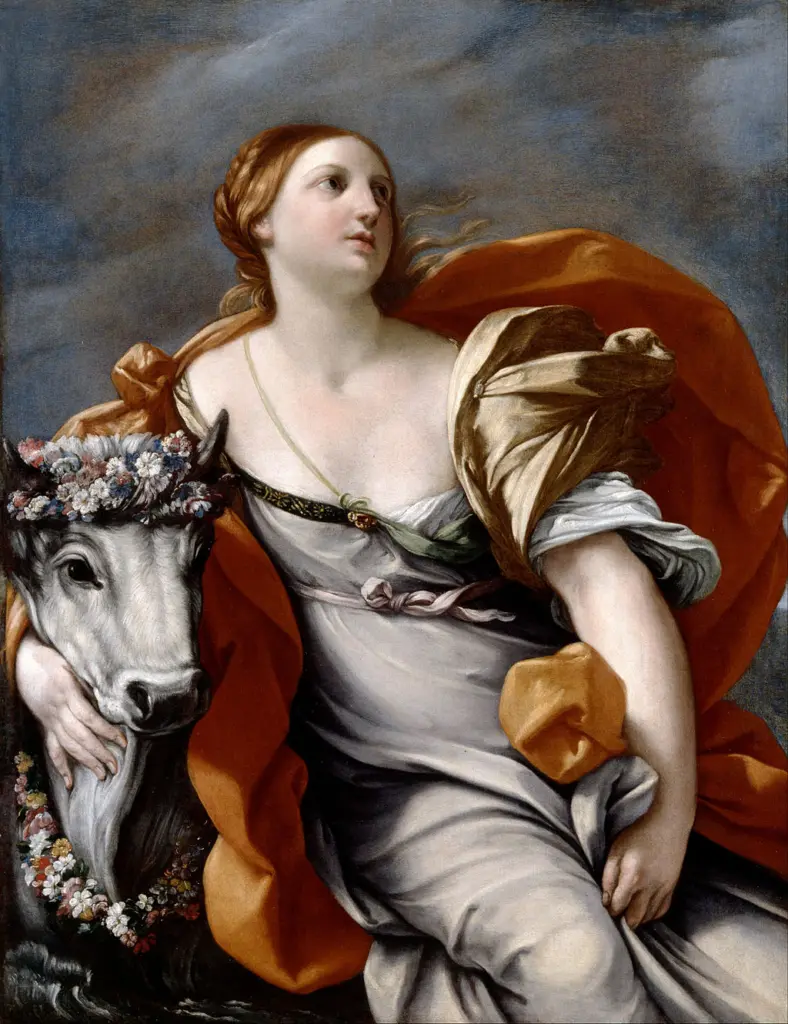
Symbolism
A prominent Greek tale recounts Zeus’s infatuation with Europa. To get close to her, he morphs into a splendid white bull. Attracted to the bull’s tranquil aura, Europa climbs atop it. Zeus then reveals his true identity, whisking her away to the island of Crete.

3. Gemini - The Twins
May 21 – June 20
Element: Air
Gemini, with its dual nature and quicksilver intellect, aligns with the Air element. This connection underscores attributes like communication, adaptability, and the constant flow of ideas. Just as air is ever-present, encompassing and always in motion, Gemini thrives on exchange, interaction, and versatility.
Archetype: The Communicator
Geminis are characterized by their innate ability to convey ideas, engage in intellectual pursuits, and effortlessly adapt to varying modes of communication. This archetype encapsulates their love for dialogue, their curious nature, and their aptitude for juggling multiple perspectives. Always hungry for knowledge and new experiences, Gemini, as The Communicator, seeks to connect, inform, and be informed.
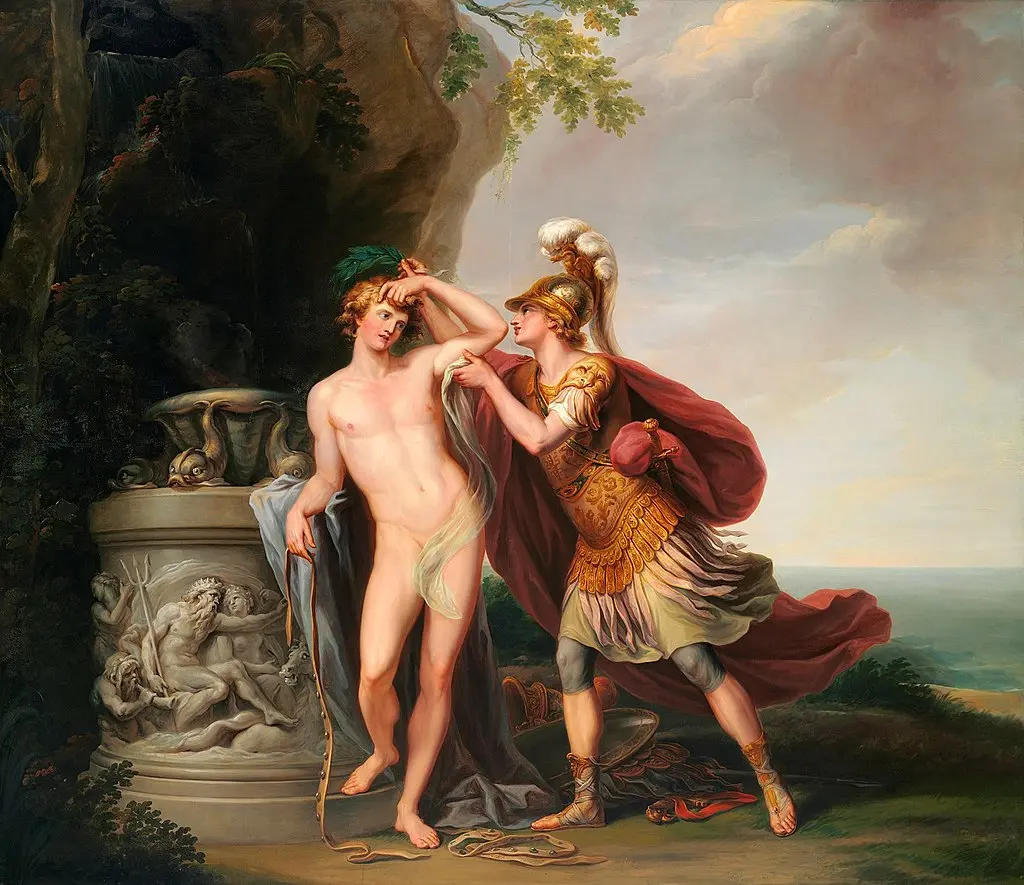
Symbolism
Gemini is symbolized by The Twins, often referred to as Castor and Pollux from Greek mythology. These brothers, one mortal and the other divine, shared an unbreakable bond. When Castor died, Pollux was so grief-stricken that he begged Zeus to let him share his own immortality with his brother. Moved by this profound display of brotherly love, Zeus transformed them into the constellation of Gemini, allowing them to remain together for eternity. The Twins represent the sign’s adaptability, its ability to see multiple sides of any situation, and its inherent duality—balancing both the logical and the emotional, the known and the unknown.

4. Cancer - The Crab
June 21 – July 22
Element: Water
Cancer, with its deep-rooted emotional currents and protective instincts, is associated with the Water element. This connection draws attention to qualities like intuition, sensitivity, and the ability to nurture. Just as water is essential for life, providing sustenance and a sense of renewal, Cancer embodies care, compassion, and a profound emotional depth.
Archetype: The Nurturer
Cancers are characterized by their innate desire to care for, protect, and provide emotional solace. The Nurturer archetype underscores their maternal instincts, their need to create a safe haven, and their ability to empathize deeply with others. With a heart often guided by emotion rather than logic, Cancer, as The Nurturer, seeks to comfort, heal, and shelter.

Symbolism
One of the associated myths from Greek mythology, where a giant crab named Karkinos was sent by the goddess Hera to distract Hercules during his battle with the Hydra. Even though the crab was crushed underfoot by Hercules, Hera, in recognition of its efforts, placed it among the stars, giving birth to the Cancer constellation.

5. Leo - The Lion
July 23 – August 22
Element: Fire
Leo, radiant and commanding, is intrinsically tied to the Fire element. This connection brings to light characteristics of warmth, energy, and a luminous presence. Just as the sun is the center of our solar system, Leo, ruled by the sun, stands out with its charisma, exuberance, and a natural flair for the dramatic.
Archetype: The Sovereign
The Sovereign archetype captures Leo’s regal essence. Leos are characterized by their leadership, dignity, and a sense of authority. The Sovereign archetype emphasizes their natural inclination to lead, their inherent confidence, and their desire for recognition and admiration.
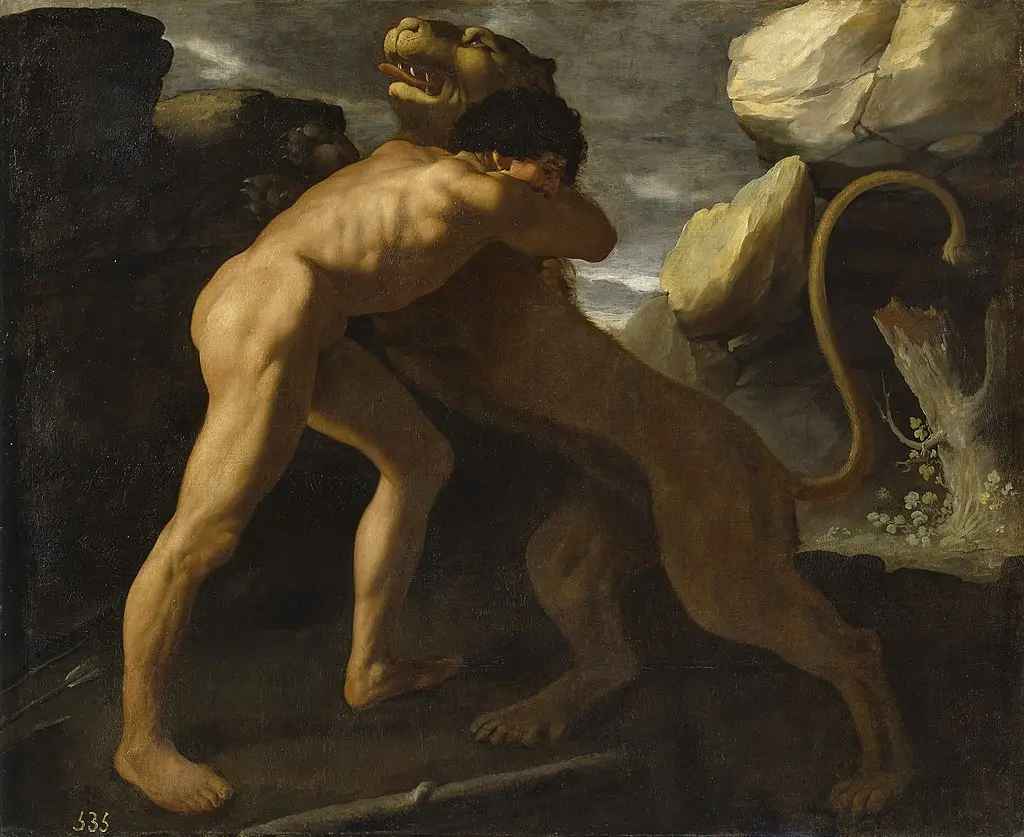
Symbolism
In Greek mythology, the Nemean Lion was a beast of great prowess, known for its golden fur that was impervious to weapons and its claws sharper than any human-made blade. This lion roamed the region of Nemea, terrorizing the local inhabitants.
When Hercules was assigned the task of capturing the Nemean Lion as the first of his Twelve Labors, he initially tried to pierce its hide with arrows, only to find them bouncing off harmlessly. Recognizing the futility of using weapons, Hercules displayed immense courage and intelligence. He cornered the lion in its cave, engaging it in close combat, and eventually strangling it to death. After its defeat, Hercules skinned the lion, using its own claw as the only sharp enough tool, and from then on wore the lion’s pelt as a protective cloak.

6. Virgo - The Maiden
August 23 – September 22
Element: Earth
Virgo, with its meticulous attention to detail and innate sense of duty, aligns with the Earth element. This connection emphasizes traits such as practicality, reliability, and a grounded nature. Like the fertile soil that nurtures the seed, Virgo fosters growth through diligence, organization, and a keen analytical mind.
Archetype: The Healer
Virgos have an intrinsic desire to improve, refine, and heal, whether it’s their environment, their loved ones, or themselves. The Healer archetype accentuates their compassionate nature, their ability to notice the nuances others might miss, and their drive to remedy imperfections.
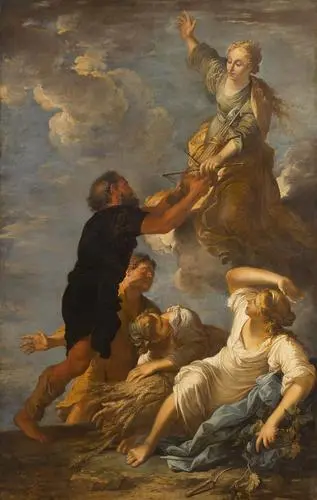
Symbolism
Virgo is symbolized by The Virgin, often associated with the goddesses of fertility and harvest. In Greek mythology, one of the primary figures linked to this sign is Astraea, the celestial virgin. She was the last of the immortals to live with humans during the Golden Age, a time of peace and prosperity. As mankind progressed, the subsequent ages brought corruption and wickedness, prompting the other gods to retreat. However, Astraea remained the longest, only leaving when the wickedness became too much, ascending to the sky to become the constellation Virgo.

7. Libra - The Scales
September 23 – October 22
Element: Air
Libra, characterized by its quest for balance and harmony, is aligned with the Air element. This association accentuates qualities such as intellect, communication, and sociability. Just as the air facilitates connection and balance, Libra seeks equilibrium in relationships, ideas, and their environment.
Archetype: The Diplomat
Librans have an innate ability to mediate, negotiate, and see multiple perspectives. The Diplomat archetype shows their commitment to justice, their natural flair for building bridges between opposing sides, and their talent for resolving conflicts with grace and fairness.
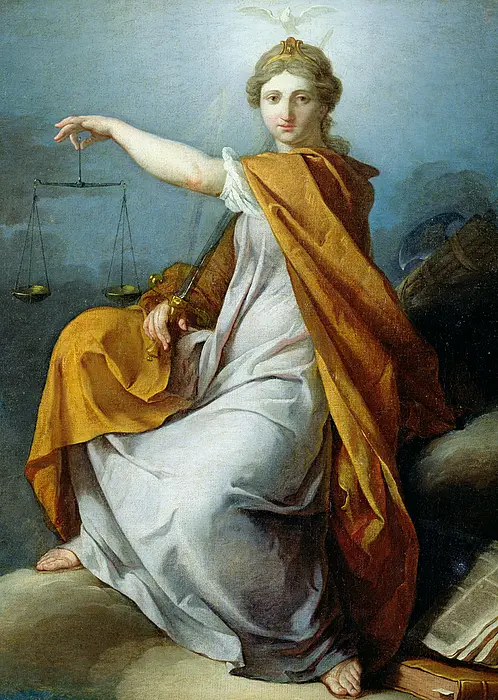
Symbolism
In Egyptian mythology, the scales played a pivotal role in the afterlife. When a soul passed on, it was said that the heart of the deceased would be weighed against the feather of Ma’at, the goddess of truth, justice, and harmony. If the heart was found to be as light as the feather, the soul would be granted a place in the Field of Reeds, a paradise-like afterlife. But if the heart was heavier, it would be consumed by Ammit, a demoness, and the soul would be lost.
In Greek mythology, the scales are often associated with Themis, a goddess of justice. Themis, an ancient Titaness, was known to advise Zeus on divine law and order, emphasizing the theme of balance and morality.

8. Scorpio - The Scorpion
October 23 – November 21
Element: Water
Scorpio, renowned for its intensity and depth, is intricately linked to the Water element. Showcasing characteristics such as emotional depth, intuition, and transformative power. Like the mysterious depths of the ocean, Scorpio is known for its capacity to see beneath the surface, understanding hidden motives and unearthing secrets.
Archetype: The Detective
The Detective archetype epitomizes Scorpio’s nature. Scorpios possess an innate desire to uncover truths, delve deep into mysteries, and explore the hidden corners of the psyche. The Detective archetype emphasizes their keen observational skills, their ability to decipher what’s concealed, and their relentless pursuit of depth and understanding.
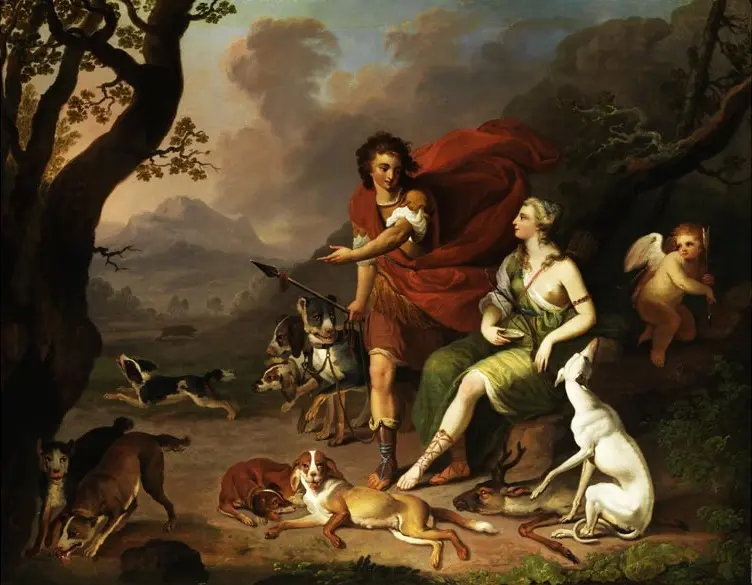
Symbolism
In one Greek legend, the mighty hunter Orion boasted that he could kill all the animals on Earth. To punish his arrogance and protect the creatures, Artemis, or in some accounts Gaia, sent a scorpion to kill Orion. After the confrontation, both Orion and the Scorpion were placed in the sky as constellations, forever chasing one another.
However, Scorpio’s mythology isn’t limited to the scorpion alone. It is also associated, strangely enough, with the Phoenix, a mythical bird that is reborn from its ashes, symbolizing death, rebirth, and transformation. This ties into Scorpio’s inherent nature of transformation, resurrection, and its association with the cycle of life, death, and rebirth.

9. Sagittarius - The Archer
November 22 – December 21
Element: Fire
Sagittarius, with its boundless enthusiasm and quest for knowledge, aligns with the Fire element. This association brings forth attributes such as inspiration, adventure, and a zest for life. Much like a fire that illuminates and warms its surroundings, Sagittarius shines light on the unknown, always eager to explore and expand horizons.
Archetype: The Explorer
Individuals of this sign are characterized by their love for travel, their insatiable curiosity, and their desire to discover new terrains, both physically and intellectually. The Explorer archetype highlights their adventurous spirit, their pursuit of wisdom, and their boundless optimism.
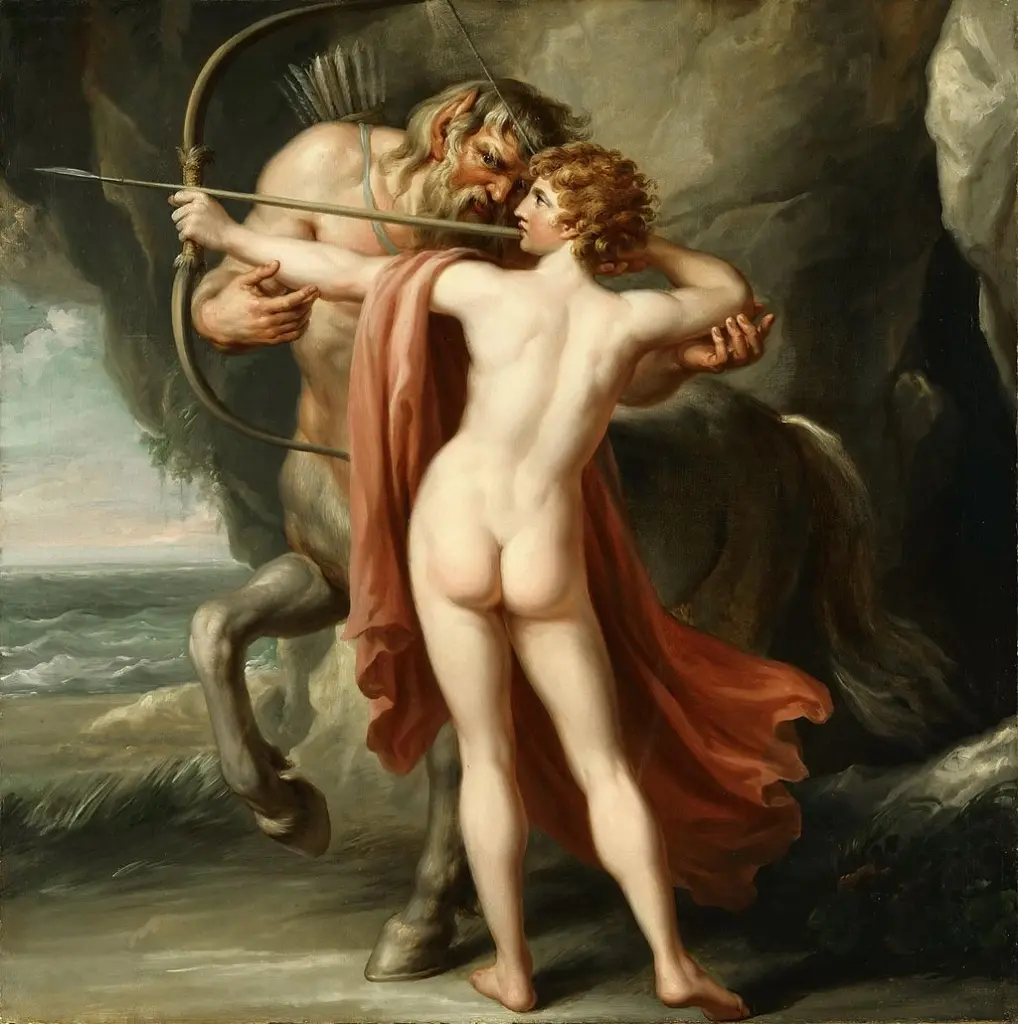
Symbolism
Sagittarius is depicted as The Archer, often visualized as a centaur with a bow and arrow. In Greek mythology, one significant centaur associated with this symbol is Chiron. Unlike most centaurs who were known for their wild and unruly nature, Chiron was wise, just, and a renowned healer and teacher. He was accidentally wounded by Hercules with a poisoned arrow. Despite his immortality and skills in healing, Chiron couldn’t heal himself and suffered immense pain. To escape his suffering, he offered to take the place of Prometheus and died, later being immortalized as a constellation in the sky.

10. Capricorn - The Sea-Goat
December 22 – January 19
Element: Earth
Capricorn, marked by its discipline, structure, and ambition, is deeply connected to the Earth element. This bond underscores qualities such as practicality, perseverance, and a drive to achieve tangible results. Much like the sturdy mountain that steadily reaches for the skies, Capricorn is unwavering in its pursuit of long-term goals and success.
Archetype: The Sage
Capricorn’s archetype can be aptly described as The Sage. This represents the sign’s wisdom, maturity, and often their old-soul nature. Capricorns are known for their seasoned perspective, their ability to make strategic decisions based on both knowledge and experience, and their innate sense of responsibility. As the last of the Earth signs, Capricorn takes the practicality of Taurus and the transformational nature of Virgo and adds a layer of mastery over time, often leading them to be visionaries in their respective fields.
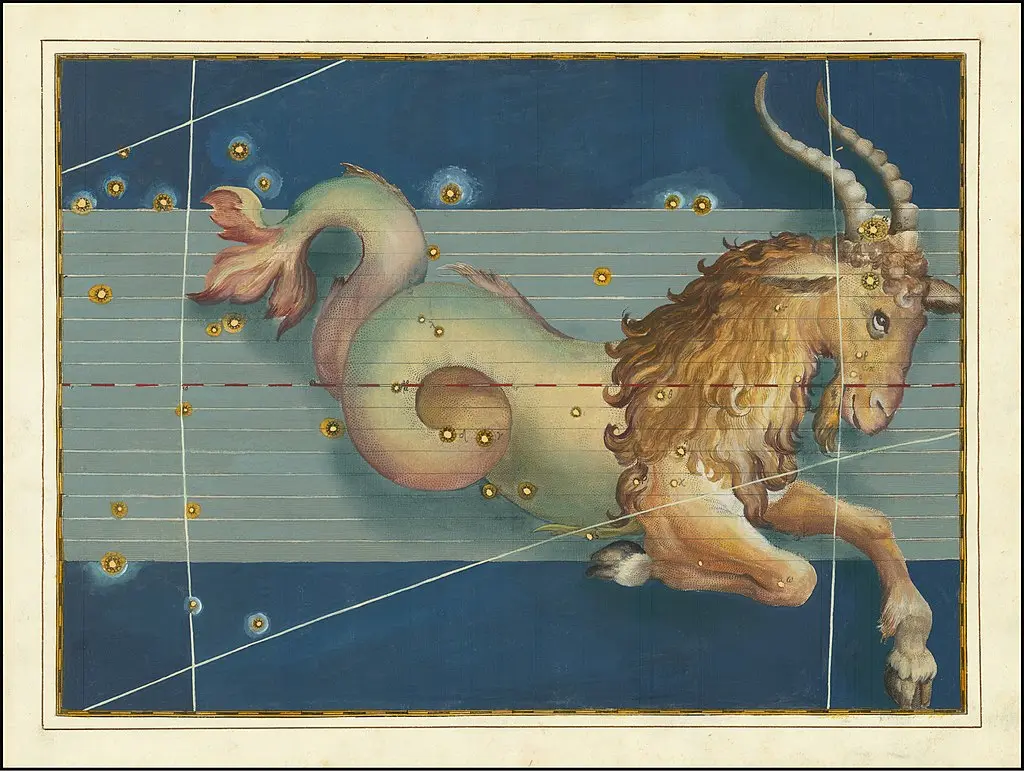
Symbolism
Capricorn is symbolized by The Sea-Goat, a creature with the front half of a goat and the tail of a fish. This enigmatic creature has origins in various mythological tales. One prominent myth is tied to the god Pan in Greek mythology. During a confrontation with the monster Typhon, Pan transformed his lower half into a fish to escape underwater, while the upper half remained that of a goat, resulting in the unique combination.
Another association ties Capricorn to the god Enki from Sumerian mythology, who was often depicted with a goat and fish tail. Enki was the god of water, creation, and intelligence, playing a crucial role in the creation of humanity and imparting wisdom and arts to people.
The Sea-Goat’s blend of terrestrial and aquatic elements symbolizes Capricorn’s mastery over both material and emotional realms. The goat’s determination to climb every mountain resonates with Capricorn’s ambition, while the fish tail speaks to their depth, intuition, and ability to navigate the emotional waters with grace.

11. Aquarius - The Water Bearer
January 20 – February 18
Element: Air
Aquarius, known for its forward-thinking and humanitarian qualities, is linked to the Air element. This connection brings forth attributes such as intellectual depth, innovation, and a knack for communication. Like the free-flowing wind that is ever-changing and unpredictable, Aquarius is known for its revolutionary spirit and the desire to challenge the status quo.
Archetype: The Visionary
The Visionary archetype embodies Aquarius’ essence. Aquarians are characterized by their progressive mindset, their quest for the novel, and their innate desire to bring about positive change in the world. The Visionary archetype highlights their ability to see beyond the present, their passion for futuristic ideas, and their determination to enact societal transformation.
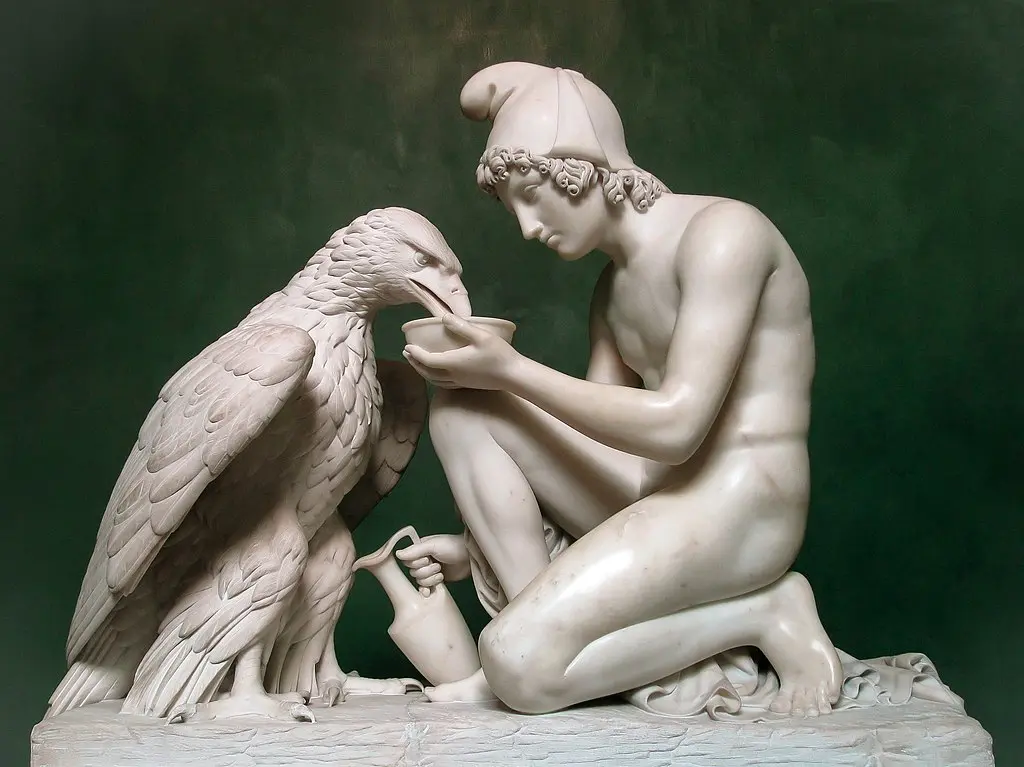
Symbolism
Aquarius is symbolized by Ganymede in Greek mythology. Ganymede, a beautiful Trojan prince, caught the eye of Zeus. Zeus transformed into an eagle and whisked Ganymede away to Mount Olympus. There, Ganymede was given the task of serving as the cupbearer to the gods, pouring them nectar and ambrosia.
In a broader interpretation, the act of pouring water can be seen as bestowing life and knowledge upon the earth. It symbolizes a constant flow of ideas, innovation, and humanitarian efforts that Aquarius so naturally embodies. The water, while it might seem counterintuitive for an Air sign, signifies the cleansing, renewing, and life-giving force that ideas and revolutionary changes can bring to humanity.

12. Pisces - The Fish
February 19 – March 20
Element: Water
Pisces, recognized for its empathy, intuition, and deep emotional currents, is intrinsically tied to the Water element. This relationship has qualities such as adaptability, compassion, and a profound connection to the unseen realms of emotions and dreams. Just as water can take the shape of any container, Pisces has a unique ability to understand and merge with diverse emotional landscapes.
Archetype: The Dreamer
Pisceans often find themselves drifting between the realms of reality and fantasy, with a strong connection to the ethereal and spiritual domains. The Dreamer archetype is a callback to their boundless imagination, their deep-seated intuition, and their ability to perceive beyond the tangible world.
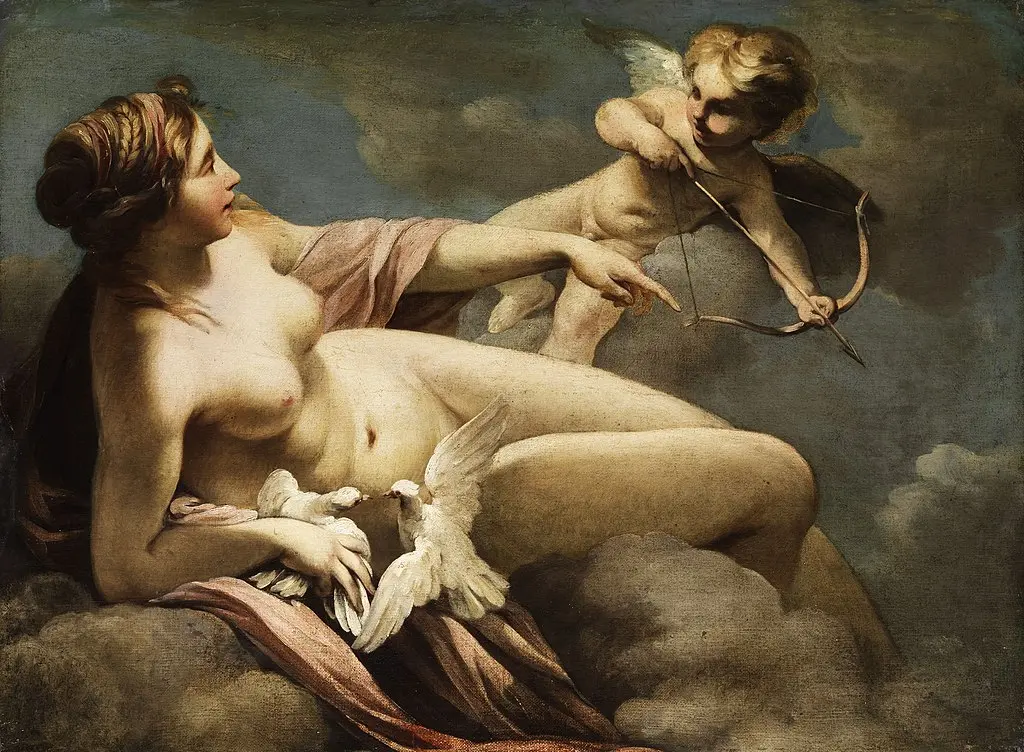
Symbolism
Pisces is often depicted as two fish swimming in opposite directions but connected by a thread. This imagery traces back to a tale in Greek mythology involving the goddess Aphrodite and her son Eros. To escape the monstrous Typhon, they transformed into fish and dived into the Euphrates River. The cord that binds the two fish ensures that mother and child wouldn’t lose one another amidst the tumultuous waters.
Another interpretation ties the dual fish to the duality of the Piscean nature. One fish swims upstream, representing the conscious mind and the physical realm, while the other swims downstream, symbolizing the unconscious mind and spiritual depths.

13. Ophiuchus - The Serpent Bearer
November 29 – December 17
Element: Ether
I always like to include the 13th Zodiac just for extra information. Ophiuchus aligns with the concept of Ether, often considered the fifth, quintessential element as reflected by the Five Platonic Solids in the realms of Sacred Geometry. Unlike the traditional four elements, Ether represents the celestial, the ethereal, and the space that exists beyond our material realm. This association hints at Ophiuchus’ bridge between the earthly and the divine, the tangible and the transcendent.
Archetype: The Transformer
Given Ophiuchus’s association with the ability to bring the dead back to life and the intertwining of the man and serpent, it can be seen as an embodiment of transformation and metamorphosis. This goes beyond healing and delves into profound changes, rebirth, and evolution. The Transformer archetype shows the sign’s potential for profound inner and outer change, drawing upon both its healing and its transformative energy.
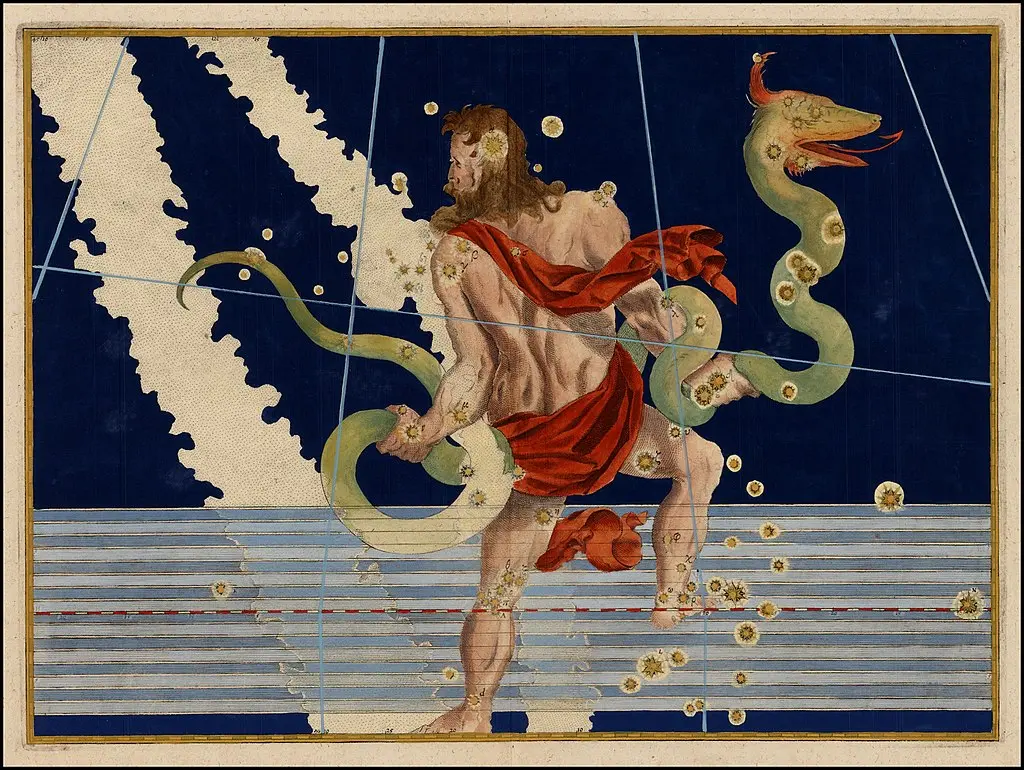
Symbolism
Ophiuchus is symbolized by The Serpent Bearer, a man wrestling a snake. The primary mythological association is with Asclepius, the son of Apollo and a mortal woman named Coronis. Asclepius was taught by the centaur Chiron and quickly became a master healer, even discovering a way to bring the dead back to life. This ability concerned Hades, the god of the underworld, who felt that Asclepius might empty his realm. Due to this, Zeus killed Asclepius with a thunderbolt but later placed him in the sky as the constellation Ophiuchus in recognition of his contributions.
The serpent, a common symbol for rejuvenation and healing due to its ability to shed its skin, is a fitting companion for Asclepius. Snakes were also sacred animals in many healing temples in ancient Greece, further tying the sign to themes of health, rebirth, and transformation.
In broader symbolism, the struggle between the man and the serpent in the Ophiuchus representation might symbolize humanity’s constant endeavor to harness, understand, and integrate the primal, instinctual, or transformative energies within.
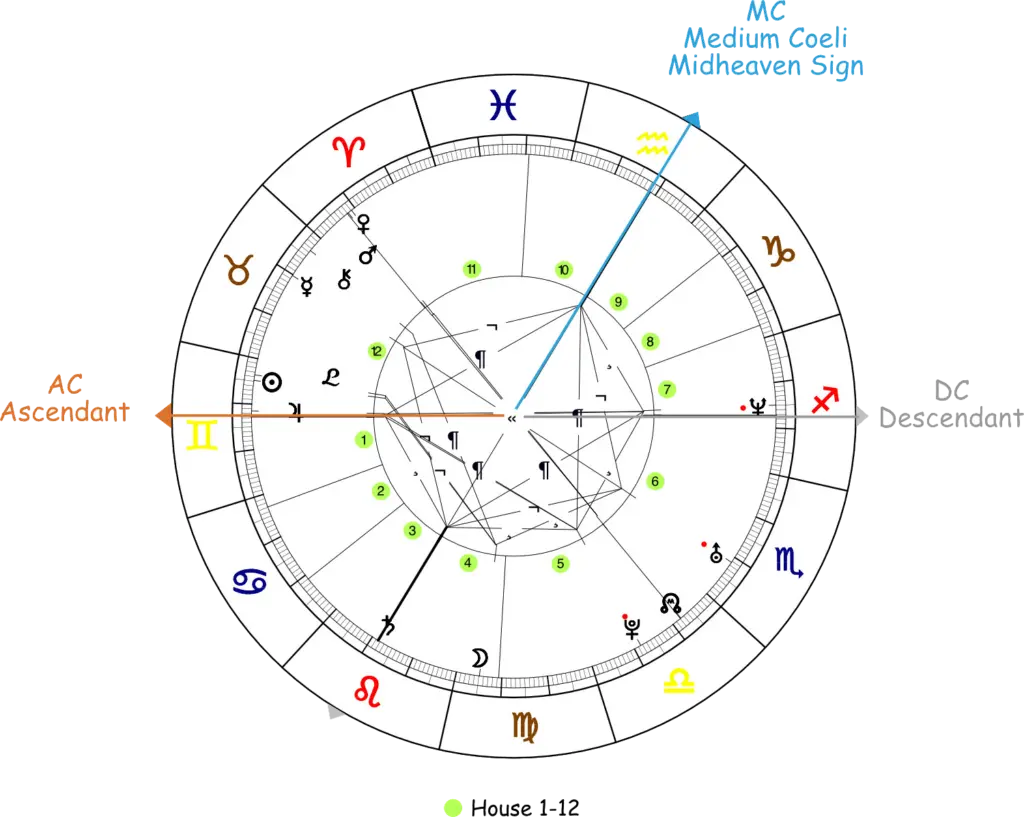
The Ascendant, Midheaven & Imum Coeli
- The Ascendant, or Rising Sign, is the zodiac sign that was on the eastern horizon at the time of birth. It represents the mask we wear, our initial reactions to situations, and how others first perceive us. In archetypal astrology, the Ascendant is the archetype of our immediate expression and outer personality. It’s the front door to our chart and sets the tone for how we approach the world.
- The Midheaven (often denoted as MC, standing for Medium Coeli or “middle of the sky”), on the other hand, represents our public life, career, reputation, and aspirations. It describes how we are viewed by the world at large, our vocational path, and our overarching goals. In terms of archetypes, the Midheaven can be seen as the overarching narrative or mission of our public persona. Both the Ascendant and the Midheaven are pivotal points in the natal chart. They don’t belong to a specific house but instead govern the cusp of the 1st and 10th houses, respectively. In archetypal astrology, understanding these points can provide deep insights into the interplay of personal identity and public roles in an individual’s life.
- The Imum Coeli (IC) touches on our innermost self, our roots, home, family, and our subconscious. Located at the cusp of the 4th house, it delves into themes of personal security, our early home life, and our connection to the past. The IC can offer insight into how we find comfort, how we process emotions, and the private self that may not be immediately visible to the outer world. In archetypal terms, while the MC might symbolize the role we feel called to play in the world, the IC represents the foundation on which that role is built. It’s the archetype of our inner sanctuary, the private spaces we retreat to for solace and introspection. The balance between the MC and IC in a person’s chart can offer profound insights into the interplay between their public aspirations and private emotional needs.
The 12 Astrological Houses
The astrological chart is divided into twelve houses, each representing a distinct area of one’s life. Imagine a clock, with each hour representing a house; this is how the circular birth chart is segmented. Each house is associated with specific life themes and provides context for the planets’ energies, showing in which area of life those energies are most likely to manifest.
While zodiac signs describe how someone does something (their style, approach, and characteristics), the houses indicate where (in which area of life) these traits are most evident. For example, Venus in Leo describes someone who loves with passion, drama, and loyalty (Leo qualities). If Venus, with its Leo characteristics, is located in the 10th house (which governs career and public reputation), it suggests a person who might seek attention and admiration in their professional life or whose career involves creativity and performance.
When interpreting an astrological chart, merging the qualities of the zodiac sign with the life theme of the house provides a more nuanced and detailed understanding of a person’s nature and destiny. Here are the 12 houses:
- The House of Self: Often associated with the Ascendant or Rising Sign, this house governs first impressions, the self-image, and the physical appearance. It represents the self as it appears to the outside world.
- The House of Possessions: Covers material possessions, personal values, and self-worth. It can also indicate one’s approach to finances.
- The House of Communication: Governs all forms of communication, including speaking, writing, and learning. It also represents short trips, siblings, and the immediate environment.
- The House of Home and Family: Associated with the Imum Coeli, this house relates to one’s home, family, ancestry, and emotional foundation. It represents our roots and private life.
- The House of Pleasure: This house governs creative self-expression, romance, entertainment, children, and personal pleasures.
- The House of Health and Service: Covers daily routines, health, work environment, and service to others. It’s about how we maintain ourselves day-to-day.
- The House of Partnerships: Often associated with the Descendant, this house governs all types of partnerships, including marriage, business relationships, and contracts.
- The House of Transformation: It deals with shared resources, intense emotional bonds, and transformation. Topics like inheritance, sexuality, and rebirth fall under this house.
- The House of Philosophy: This house represents higher learning, philosophy, spirituality, long-distance travel, and foreign cultures. It’s about expanding horizons and seeking wisdom.
- The House of Career and Reputation: Associated with the Midheaven, it covers one’s career, reputation, public image, and contribution to society.
- The House of Friendships: It governs friendships, group activities, dreams, and aspirations. It’s about our wider social network and shared goals.
- The House of the Unconscious: This house deals with the subconscious mind, hidden strengths and weaknesses, dreams, and spiritual development. It represents what is hidden or below the surface.
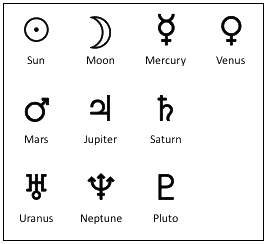
The Planets and Their Archetypal Influences
In astrology, planets are more than just celestial bodies; they are carriers of specific energies, each with its own set of characteristics and meanings:
-
Sun: Represents our core self, ego, identity, and overall life force. It’s the essence of who we are.
-
Moon: Governs our emotions, instincts, moods, and subconscious. It’s a reflection of our inner self and how we instinctively react.
-
Mercury: Symbolizes communication, intellect, and how we process and share information.
-
Venus: Represents love, beauty, pleasure, and values. It speaks to how we relate to others and what we find aesthetically pleasing.
-
Mars: The planet of action, drive, and desire. It influences how we assert ourselves and pursue our goals.
-
Jupiter: Denotes expansion, luck, and philosophy. It’s about growth, optimism, and our search for meaning and truth.
-
Saturn: Represents structure, discipline, and responsibility. It shows our limitations, boundaries, and the lessons we must learn.
-
Uranus: The planet of innovation, rebellion, and change. It breaks conventions and introduces unpredictability.
-
Neptune: Symbolizes dreams, illusions, spirituality, and intuition. It’s the realm of the ethereal and the subconscious.
-
Pluto: Represents transformation, power, and rebirth. It’s about profound change and evolution.
Each planet carries a specific energy, and when combined with the energy of a zodiac sign, it can either amplify or challenge the inherent traits of that sign. For instance, Mars in Aries (its home sign) can intensify the assertiveness and drive of the sign, making the individual even more dynamic and proactive. In contrast, Mars in Libra might challenge the directness of Mars, as Libra seeks balance and harmony, potentially causing a push-pull dynamic in taking action.
Planets in specific signs color those signs with their energies, leading to a nuanced interpretation. When interpreting a planetary position in a zodiac sign, it’s a dance between the planet’s inherent energy and the modality of the sign.
For example, the Sun in Scorpio might be seen as the “Mystic Detective” – the core identity (Sun) is focused on probing the depths (Scorpio) and uncovering truths hidden beneath the surface. Another example might be Mercury in Sagittarius, which can be viewed as the “Philosophical Communicator” – where the communication style (Mercury) is expansive, seeking higher truths and broader perspectives (Sagittarius).
Through this interplay, individual archetypes emerge, painting a detailed portrait of an individual’s strengths, challenges, and overall character.









